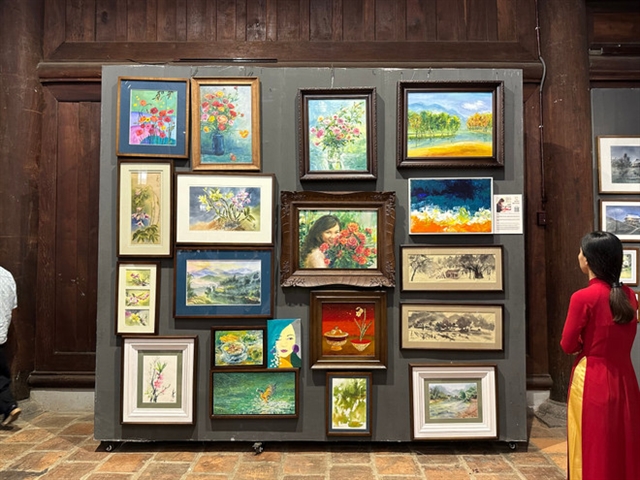 Life & Style
Life & Style

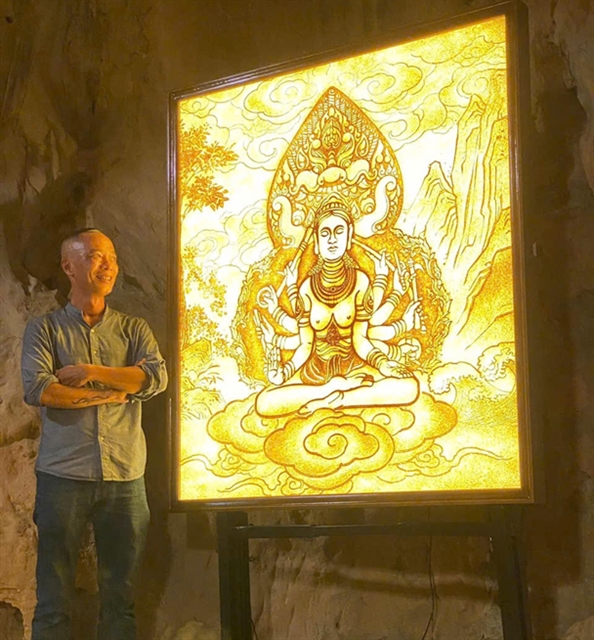 |
| ILLUMINATING: Artist Lê Thanh Hà and his coconut palm fibre paper picture of Goddess Thiên Y A Na displayed in Đà Nẵng. Photo courtesy of Lê Thanh Hà |
By Vũ Đạt
During his 13 years as an artist, Lê Thanh Hà discovered a unique method to make pictures: using coconut palm branches to produce a special type of paper, which then serves as the canvas for his artwork.
In many cultures, the coconut palm is seen as a “generous” tree—providing food, drink, building materials and more. But not every part of the tree is considered useful. For Hà, however, what is often discarded can be transformed into stunning pieces of art.
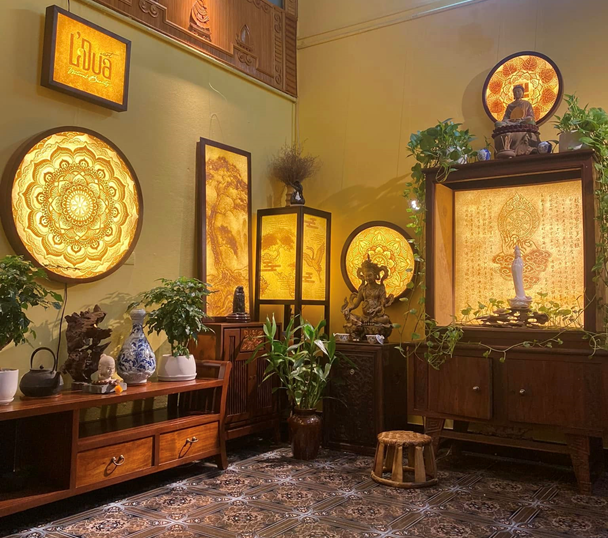 |
| WARM TONES: Coconut palm fibre paper pictures displayed at La'DUA.art workshop in Đà Nẵng. Photo courtesy of La'DUA.art |
Hà and his colleagues now run a workshop called La’DUA.art in Đà Nẵng City, specialising in handcrafted natural art made from coconut palm fibre. Their method involves a mould-based wet paper pulp carving technique.
The process is the result of Hà’s extensive research into traditional paper making by pouring pulp into a mould used by the Mông ethnic group, combined with Rakusui Washi—a Japanese waterdrop paper printing method. By blending these two approaches, Hà can create intricate and detailed artworks on paper of any sizes.
He uses coconut palm because it can be fermented and whitened naturally, without the use of chemical bleaching agents.
“The coconut tree is significant to Vietnamese culture. It represents life, compassion, and generosity,” he said.
Whether it’s coconut pruning season or he spots a fallen branch, Hà collects and recycles every part of the dry branches to minimise waste and protect the environment.
The process of making coconut fibre paper begins with collecting the stems, fermenting and cooking them slowly with lime, then grinding the material into a fine pulp. This pulp is mixed with water and poured into a wooden frame.
Design cutouts are then dipped into the mixture and sprayed with water at varying pressures to shape the pulp. Once the cutouts are removed, they leave behind delicate patterns on the paper’s surface. The frame is then left to dry in the sun for several days.
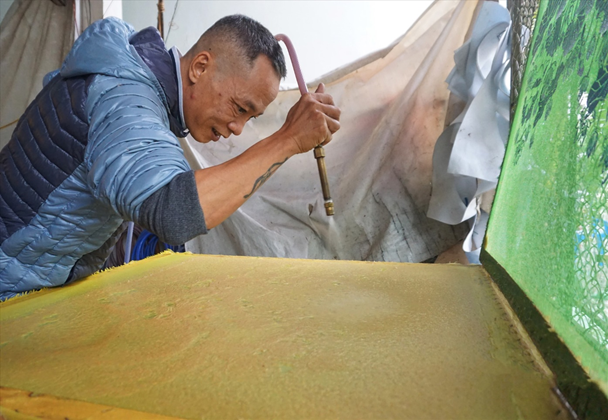 |
| FOCUSED: The details on coconut palm fibre paper are carved using high pressure water. Photo courtesy of Lê Thanh Hà |
A special feature of Hà’s pictures is their translucency. Displayed in natural light, they resemble mid-relief carvings, with depth and dimension. When backlit, the patterns glow like a lantern, enhancing their visual appeal.
His subjects range from natural landscapes and portraits to cultural and spiritual themes. Hà said that he particularly enjoys depicting motifs from Vietnamese culture—such as lotus flowers, Eastern dragons, and Buddhist deities.
One of his favourite themes is honouring Vietnamese historical figures.
“I want to show my gratitude and immortalise their stories through my pictures—religious figures like Zen masters Trần Nhân Tông, Lý Quốc Sư, Thích Nhất Hạnh, and Thích Quảng Đức,” he said.
“I also admire international luminaries who contributed to humanity, such as Dr Alexandre Yersin and scientist Albert Einstein.”
Over the years, many curious visitors—particularly from the US, South Korea and Italy—have visited Hà’s workshop to learn about the process. Some have even commissioned custom coconut pictures as meaningful souvenirs or gifts.
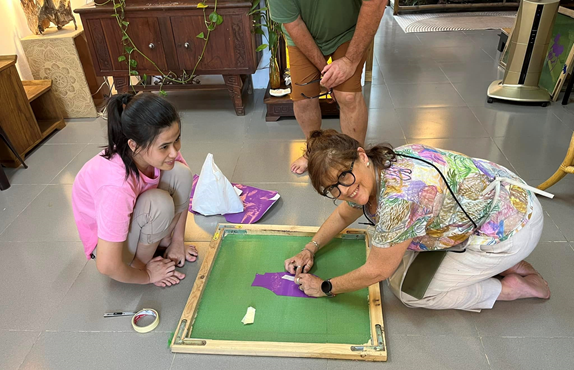 |
| NEW FRIENDS: A foreign tourist (right) trying out carving details on coconut palm fibre paper at La'DUA.art studio. Photo courtesy of Lê Thanh Hà |
Hà noted that many Vietnamese traditional crafts are at risk of fading away, often because artisans keep their techniques secret. He prefers a different approach.
“When I first named my company, I called it Giấy Quê Tôi (My Hometown’s Paper) so I could share my local techniques with anyone who wanted to learn, free of charge,” he said.
“I want everyone to be able to make with their own hands, using their creativity and intuition.” VNS
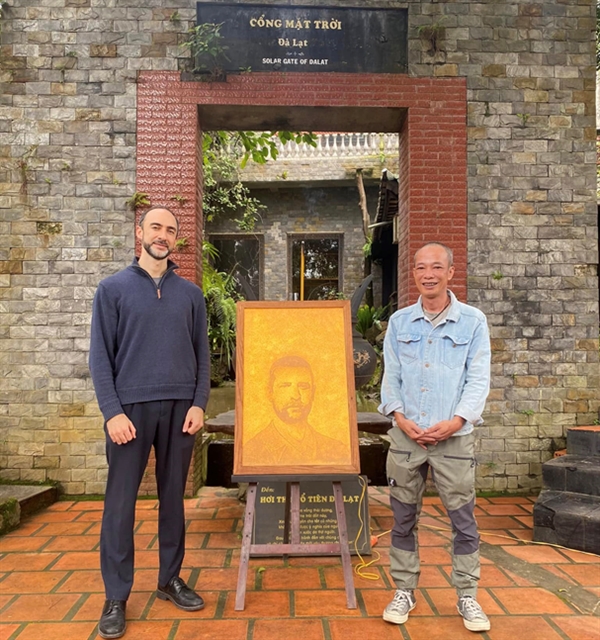 |
| EXHIBITED: Artist Lê Thanh Hà (right) with his portrait of Dr Alexander Yersin displayed in Đà Lạt City. Photo courtesy of Lê Thanh Hà |